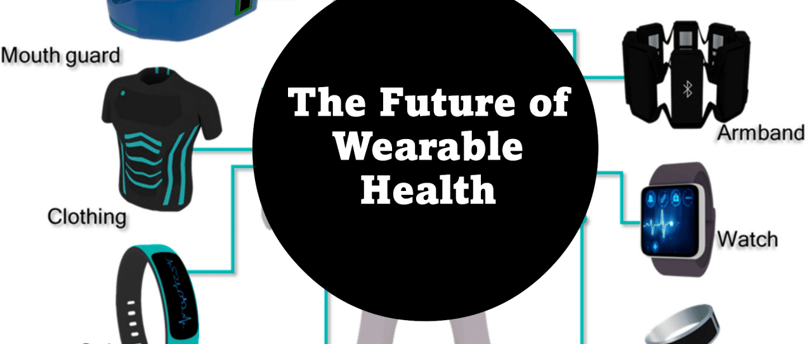The Future of Wearable Health Devices
The wearable health technology landscape has evolved rapidly, with smartwatches and fitness trackers already helping us keep track of our health in ways we never thought possible. Yet, the future holds even more transformative possibilities—devices that will seamlessly integrate into our lives, provide hyper-personalized insights, and harness renewable energy for uninterrupted monitoring.
Dr. Manish Shrivastava
1/23/20254 min read


Imagine a wearable health device that isn’t just an accessory or an add-on but an integral part of our clothing or environment, acting as a real-time health coach, medical assistant, and proactive partner in preventive care.
Key Features of Tomorrow’s Wearable Health Devices
1. Comprehensive Monitoring Beyond Basics
Wearable devices of the future will go far beyond tracking heart rate, steps, and calories burned. Instead, they’ll integrate sophisticated sensors capable of monitoring complex health indicators such as blood pressure, blood glucose, stress levels, and even organ-specific functions like liver and kidney health. With innovations in bio-sensing, these wearables could measure biochemistry in real time, offering insights into hydration, electrolytes, and even hormone levels. For instance, real-time glucose monitoring could transform diabetes management, while blood pressure monitoring can alert users to potential cardiovascular risks long before symptoms appear.
2. Smart Fabric Integration for Comfortable, Discreet Health Tracking
Future wearables will prioritize comfort and aesthetics by embedding sensors directly into the clothing fabric, known as "smart fabric" technology. Rather than relying on wristbands or rings, these sensors will be woven into shirts, pants, or even shoes, enabling continuous tracking without the wearer needing to think about it. Imagine a jacket that tracks your vital signs or socks that monitor circulation—a discreet and comfortable way to keep tabs on your health without adding another device to your routine.
3. Advanced AI Analysis for Personalized Insights
A crucial component of tomorrow’s wearables is the integration of artificial intelligence (AI). With machine learning algorithms interpreting vast amounts of data, the device will identify patterns in health metrics that even medical professionals might miss. Based on individual patterns and data trends, the AI can deliver customized health insights and recommendations, functioning like a personal health coach that continually adapts to the user’s lifestyle, needs, and goals. This level of personalization could enable wearables to predict potential health issues before they become serious, offering tailored advice on managing diet, exercise, sleep, and stress.
4. Real-Time Alerts for Preventive Care
Imagine wearing a device that can detect irregularities and provide real-time alerts for potential health emergencies. For example, an individual with a history of heart issues could receive an early alert of an abnormal heart rhythm. Similarly, those with respiratory conditions could be alerted if oxygen saturation drops unexpectedly. This kind of proactive warning system could empower users to take action—or alert a healthcare provider—before a critical event, helping to save lives by intervening early.
5. Remote Patient Monitoring for Enhanced Care
Beyond personal health management, these devices can revolutionize patient monitoring and healthcare delivery. By enabling real-time data sharing with healthcare providers, future wearables will facilitate remote patient monitoring, allowing for constant oversight of chronic conditions. For instance, someone recovering from surgery could have vital signs transmitted to their doctor, ensuring a smooth recovery with fewer hospital visits. This data integration would allow healthcare professionals to intervene proactively, helping to prevent complications and reduce the burden on healthcare systems.
6. Augmented Reality Integration for Enhanced Awareness
With the integration of augmented reality (AR), wearable health devices could display health data in real-time, directly in a user’s field of vision. Through smart glasses, users could see a heads-up display of their health metrics, providing a dynamic and interactive way to engage with health data. This innovation could be especially valuable for athletes, enabling them to monitor performance during a workout or competition, or for individuals managing health conditions to make real-time adjustments to their daily activities.
7. Energy Harvesting for Sustainable Power
Frequent charging is one of the main challenges with current wearables. But future devices are likely to incorporate energy-harvesting technologies that convert body heat or solar energy into power. This not only extends battery life but also makes the devices more sustainable and easier to maintain, allowing them to work continuously without the inconvenience of frequent recharging.
Potential Applications: Redefining Health and Wellness
Chronic Disease Management: With the ability to continuously monitor vital health metrics, future wearables will offer unprecedented support for individuals managing chronic conditions like diabetes, hypertension, and heart disease. Real-time monitoring will facilitate early detection of potential complications, enabling users to take preventive actions and reducing the risk of serious health events.
Mental Health Support: By monitoring physiological indicators of stress, such as heart rate variability or cortisol levels, wearables can offer insights into mental health. Combined with AI, the device could recommend personalized relaxation techniques, such as breathing exercises or mindfulness activities, whenever stress levels spike. This proactive approach to mental wellness could help individuals manage stress and prevent burnout.
Sports Performance Optimization: Athletes and fitness enthusiasts could use these wearables to analyze detailed exercise data, optimizing training routines and recovery plans. Advanced wearables could detect muscle fatigue, lactic acid buildup, and other markers of exertion, offering insights to improve athletic performance and reduce injury risk.
Post-Surgical Recovery Monitoring: Future wearables could provide remote monitoring for patients recovering from surgery, allowing healthcare providers to monitor vital signs and movement patterns. Real-time data could alert caregivers to potential complications, promoting a safer and more efficient recovery process.
As wearable health technology progresses, the line between medical devices and daily accessories is blurring. Future wearables will be deeply integrated into our lives, with the potential to become proactive health coaches, wellness advisors, and personal trainers. These innovations won’t just provide data; they’ll offer actionable insights that empower us to make healthier choices, detect issues before they arise, and ultimately improve our quality of life. With comprehensive monitoring, AI-driven insights, real-time alerts, and sustainable power sources, the future of wearable technology is poised to revolutionize health and wellness—turning everyday clothing and accessories into essential tools for proactive, personalized healthcare.
Connect
Your partner in growth, market expansion, and digital execution across industries.
shri@medora.biz
+62-822-10-20-7000
© 2025. All rights reserved.
